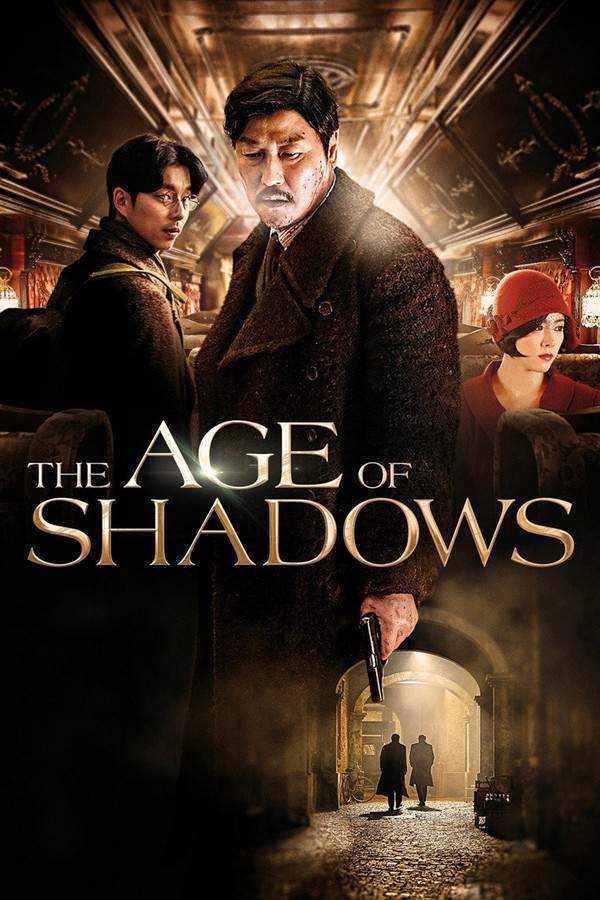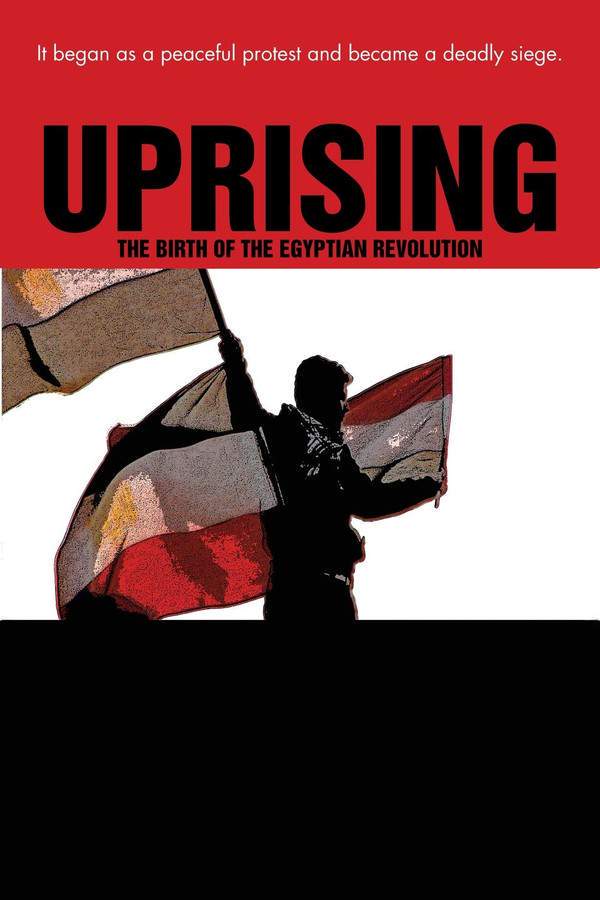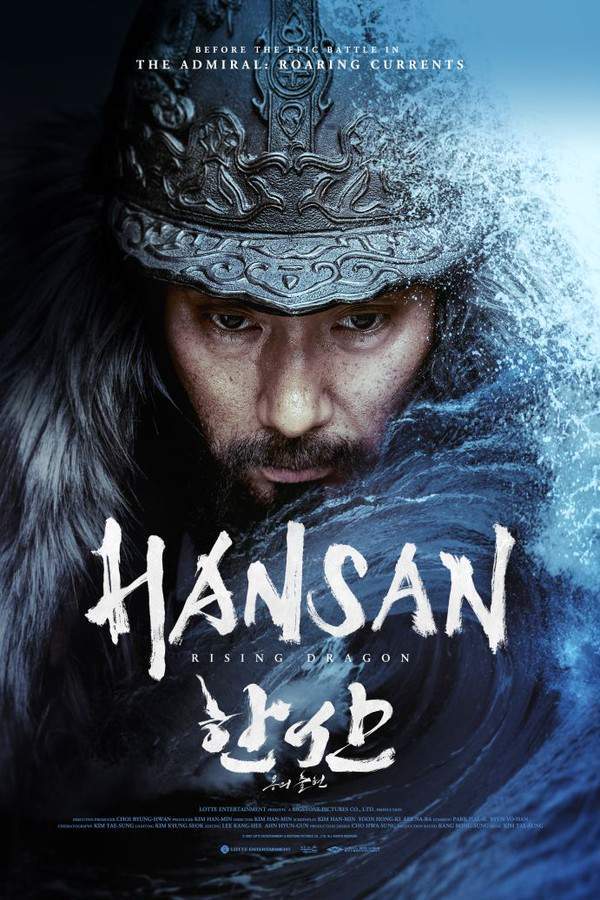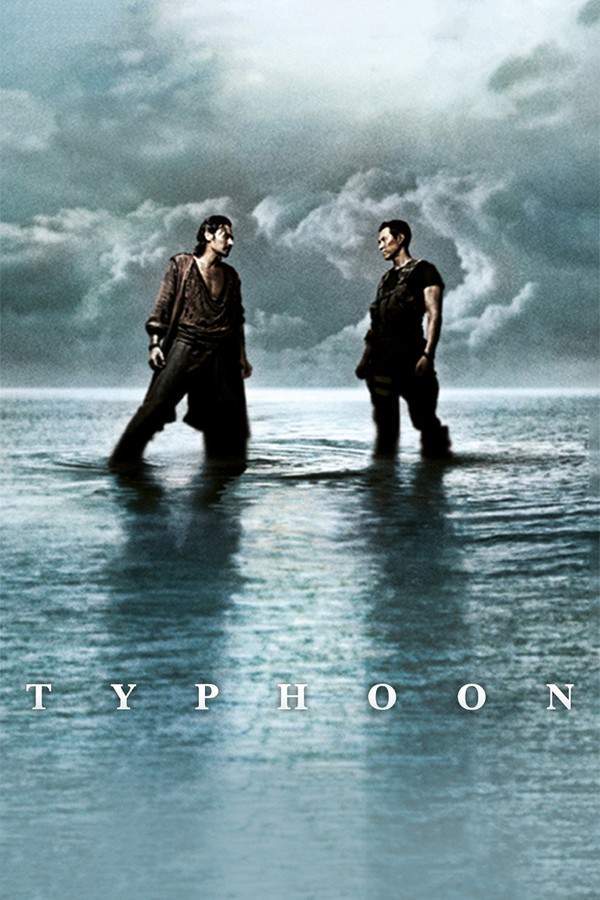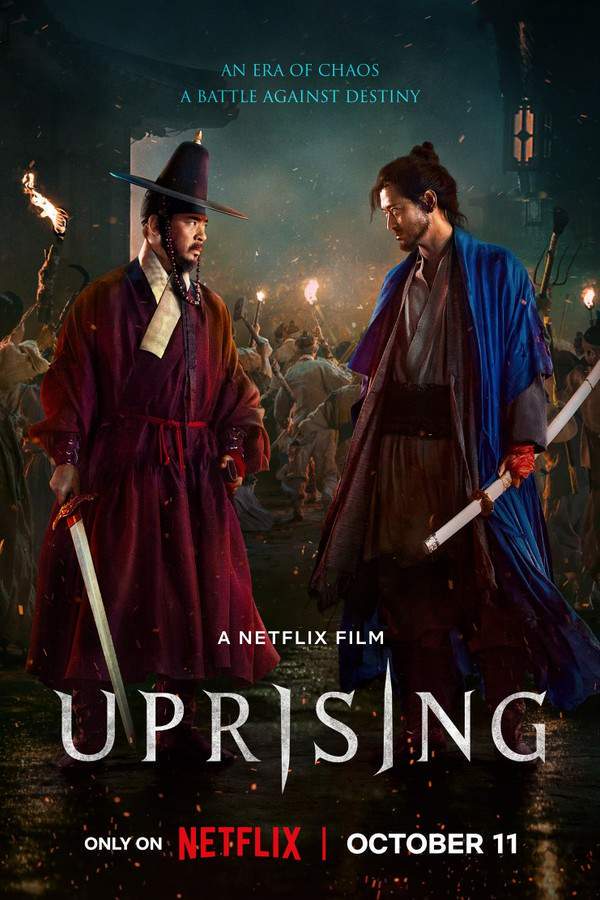
Uprising 2024
Directed by

Sang Man Kim
Made by

Moho Film
Test your knowledge of Uprising with our quiz!
Uprising Plot Summary
Read the complete plot summary and ending explained for Uprising (2024). From turning points to emotional moments, uncover what really happened and why it matters.
A scholar named Jeong Yeo-Rip had a vision for a world where everyone was treated equally, forming a private community called Great Unity that advocated for the abolishment of slavery. In this progressive society, noblemen and slaves shared meals, trained together in martial arts, and embraced the idea that true harmony was built on equality. Naturally, this revolutionary concept didn’t sit well with King Seonjo, played by Seung-won Cha, whose reign relied on maintaining traditional hierarchies that kept slaves subservient to the noble class. Jeong Yeo-Rip was soon accused of treason, leading to the attack on his community where he ultimately took his own life, leaving behind a profound message that ignited an anti-slavery movement among the populace.
Not long after, we meet Cheon Yeong, a slave portrayed by Gang Dong-Won, who finds himself captured by royal guards for attempting to escape the oppressive life he has endured for over twelve years in the clutches of the Deputy Minister of Defense. His recent attempt to flee is made even worse by the sword of his noble master being found on him—its lineage tied directly to the minister’s prestigious family. The sword, awarded for its martial excellence, complicates Cheon Yeong’s position as he finds himself at the mercy of the law yet again, now facing severe punishment for his perceived theft in addition to his escape.
The unjust nature of society’s laws becomes evident as Cheon Yeong’s story unfolds, revealing how children born to slaves are bound to inherit the same fate. Ironically, he comes from a lineage that held nobility, yet the dire financial strife led his mother to be sold into slavery to repay debts. At the same time, Cheon Yeong is forced into servitude in the very household that once belonged to his ancestors, enduring inhumane treatment as he is subjected to brutal punishments in place of the noble Yi Jong-Ryeo, played by Jeong Min Park, who is being trained as a warrior in his family tradition. The connection between Cheon Yeong and Jong-Ryeo grows more complex as their lives become intertwined—Cheon Yeong secretly teaches Jong-Ryeo martial arts to aid in his training, hoping to receive some reprieve from the brutality he endures.
But as history would have it, new challenges arise. The approach of the Japanese invasion catalyzes a change, as slaves rise against their oppressors inspired by Jeong Yeo-Rip’s teachings. Cheon Yeong confronts the harsh reality of his situation when the Japanese attack brings the political atmosphere crashing down. While he aims to gather an army from the oppressed, Jong-Ryeo is caught in a tangled web of loyalty, betrayal, and misunderstanding—convinced that Cheon Yeong has become a threat after the tragic fall of his family during the chaos.
Amidst the uprising, Cheon Yeong becomes a figure of resistance while Jong-Ryeo finds himself navigating between loyalty to his family and his friendship with Cheon Yeong, further complicated by the betrayal they both experience at the hands of those they trusted. As the battles rage on, and loyalties are tested, Cheon Yeong fights for freedom, gathering support from former slaves and strategically outmaneuvering the forces of the Japanese army led by General Genshin Kikkawa, featured prominently in the saga.
The conflict sparks an ultimate confrontation where personal vendettas and political aspirations collide spectacularly, culminating in a fierce struggle against oppressive powers. Cheon Yeong faces the tragic consequences of misplaced trust, grief, and the betrayal of those closest to him, leading him to undertake a desperate quest for both redemption and revenge. As the storm of war rages on, Cheon Yeong’s call to arms becomes ever urgent, culminating in a revolutionary movement that aims to overthrow King Seonjo and reshape a nation longing for justice. In this riveting tale of struggle, loyalty, and the quest for freedom, hope rises from the ashes of despair, and the dream of equality burns bright in the hearts of the oppressed, led by their indomitable spirit to reclaim not just their lives but their dignity.
Uprising Timeline
Follow the complete movie timeline of Uprising (2024) with every major event in chronological order. Great for understanding complex plots and story progression.
Creation of Great Unity
Scholar Jeong Yeo-Rip establishes a private community named Great Unity, advocating for the equality of all humans. He emphasizes the need to abolish slavery and demonstrates this by allowing noblemen and slaves to eat and train together, setting a radical example for his society.
Accusation of Treason
King Seonjo learns of Jeong Yeo-Rip's revolutionary ideas and views them as a direct threat to the existing social order. He accuses Yeo-Rip of treason, leading to a siege on Great Unity and an order for the scholar's arrest and execution.
Jeong Yeo-Rip's Death
Faced with arrest, Jeong Yeo-Rip takes his own life, intending to inspire a change in mindset among his countrymen. His sacrifice plants the seeds of anti-slavery sentiment and resistance against the harsh social hierarchies in Joseon.
Cheon Yeong's Capture
Cheon Yeong, a long-suffering slave, is captured after attempting to escape from his master’s home. He is brought before the noblemen, now facing severe consequences for having stolen a family heirloom sword during his flight.
The Start of Rebellion
As Cheon Yeong awaits punishment for his actions, the Japanese army attacks Joseon, causing chaos. The ongoing turmoil emboldens the slaves, motivated by Jeong Yeo-Rip's ideas, to rise against their masters.
Cheon Yeong and Jong-Ryeo's Training
Cheon Yeong becomes Jong-Ryeo's sparring partner, secretly teaching him martial arts to lessen his own punishment. Their bond grows despite the societal pressures, and Jong-Ryeo becomes more skilled, which benefits them both in their troubled lives.
Cheon Yeong's Family Tragedy
After an escape attempt to visit his family, Cheon Yeong discovers his father has committed suicide due to the family's despair. This traumatic event deepens his resolve to fight against their oppressive circumstances.
Military Examination Deception
Cheon Yeong secretly takes the military examination on behalf of Jong-Ryeo to secure a prestigious sword reward. His success leads to betrayal when Jong-Ryeo's father refuses to fulfill a promise of freedom, fearing Cheon Yeong's potential revenge.
The Slave Rebellion
During the Japanese attack, slaves rise in rebellion, empowered by Cheon Yeong's leadership. This uprising results in chaos and violence, leading to the destruction of the noble's residence and the death of several noble family members.
Betrayal and Conflict
The relationship between Cheon Yeong and Jong-Ryeo deteriorates as Jong-Ryeo mistakenly believes Cheon Yeong is responsible for his family's deaths. This misunderstanding fuels conflicts between them and leads to further betrayals amidst the chaos.
Cheon Yeong's Military Campaign
Cheon Yeong organizes the freed slaves into a rebel army and strategizes against the Japanese forces. His tactical brilliance leads to several victories, earning him a fearsome reputation among both allies and enemies.
Double Betrayal
Jong-Ryeo executes a plan to use Kikkawa Genshin, the Japanese general, for his own ends. However, Genshin betrays Jong-Ryeo's trust by sabotaging his own troops, leading to a catastrophic clash.
Final Confrontation
Cheon Yeong and Jong-Ryeo face each other amid heightened tensions and misunderstandings. The confrontation escalates as Genshin takes advantage of their discord, resulting in devastating consequences for both.
Rebellion Against King Seonjo
After the ashes of betrayal and loss, Cheon Yeong rallies former slaves for a grand assault against King Seonjo. The culmination of their struggles symbolizes a fight not just for survival, but for justice and equality in Joseon.
Uprising Characters
Explore all characters from Uprising (2024). Get detailed profiles with their roles, arcs, and key relationships explained.
Cheon Yeong (Gang Dong-won)
Cheon Yeong is a complex character who embodies resilience and defiance in the face of systemic oppression. Once a nobleman by birth, he finds himself enslaved under dire circumstances, experiencing the brutal realities of life that many face. His journey from despair to leadership as a figure of resistance reflects his transformation fueled by the desire for freedom and justice.
King Seonjo (Seung-won Cha)
King Seonjo represents the entrenched power structures and traditional hierarchies that seek to maintain control over society. His reign is characterized by his resistance to progressive ideas, notably the abolition of slavery. Conflict arises as he perceives Jeong Yeo-Rip's vision as a direct threat to his authority, embodying the challenges faced by those who wish to uphold outdated norms.
Jong-Ryeo (Jeong Min Park)
Jong-Ryeo is a nobleman caught in the turmoil of shifting loyalties and moral dilemmas. As he trains as a warrior, he grapples with his privileged position while witnessing the injustices faced by slaves like Cheon Yeong. His character arc is defined by personal conflict over loyalty and friendship, challenging preconceived notions about status and honor.
General Genshin Kikkawa (Jung Sung-il)
General Genshin Kikkawa is an antagonist embodying the foreign threat of invasion during this tumultuous period. His character serves as a catalyst for change, driving the oppressed to rise against their oppressors. As an embodiment of conflict and oppression, he challenges the protagonists in their quest for liberation.
Uprising Settings
Learn where and when Uprising (2024) takes place. Explore the film’s settings, era, and how they shape the narrative.
Time period
Late 16th century
The Late 16th century was marked by social and political upheaval, as various nations faced challenges including internal strife and external invasions. In this period, concepts of equality and human rights were emerging, challenging longstanding systems of power and oppression. The historical context of the Japanese invasion adds urgency to the characters' struggles for freedom and justice during this tumultuous time.
Location
Great Unity
Great Unity is a private community founded on the principles of equality and mutual respect, where noblemen and slaves coexisted harmoniously. This progressive society challenged the traditional hierarchies of its time, advocating for the abolishment of slavery and promoting martial arts training as a means of empowerment. It represents a beacon of hope for the oppressed, striving to create a revolutionary change in the social structure.
Uprising Themes
Discover the main themes in Uprising (2024). Analyze the deeper meanings, emotional layers, and social commentary behind the film.
✊
Resistance
Resistance is a central theme in 'Uprising,' showcasing the fight against oppressive regimes and the struggle for freedom. Characters like Cheon Yeong embody this resistance as they rally the oppressed to rise against their injustices. The film emphasizes the power of collective action and the indomitable spirit of those yearning for liberation.
💔
Betrayal
Betrayal permeates the narrative, revealing how trust can be weaponized in times of conflict. Cheon Yeong experiences profound betrayals from those he once considered allies, illustrating the complexity of human relationships amidst societal upheaval. This theme serves to highlight the fragility of loyalty in dire situations.
⚖️
Equality
The quest for equality serves as the film's driving force, rooted in Jeong Yeo-Rip's vision of a society free from the shackles of slavery. The contrasts between noblemen and slaves challenge the audience to rethink the moral frameworks governing society. As the characters engage in their struggles, the film powerfully advocates for a world where dignity and justice are afforded to all.

Coming soon on iOS and Android
The Plot Explained Mobile App
From blockbusters to hidden gems — dive into movie stories anytime, anywhere. Save your favorites, discover plots faster, and never miss a twist again.
Sign up to be the first to know when we launch. Your email stays private — always.
Uprising Ending Explained
Unravel the ending of Uprising (2024) with our detailed explanation. Understand the final scenes, character fates, and unresolved questions.
Uprising explores the deep bonds of friendship amid a backdrop of social hierarchy, war, and political corruption. The story follows Cheon-Yeong and Jong-Ryeo, childhood friends from vastly different social classes—Cheon-Yeong being a slave and Jong-Ryeo coming from the powerful military aristocracy. Their friendship begins with Cheon-Yeong teaching Jong-Ryeo how to fight, defying the rigid class system that deems Cheon-Yeong inferior. Their bond endures through many hardships, including betrayal, war, and family tragedy. Jong-Ryeo’s family, driven by societal prejudice, doesn’t free Cheon-Yeong despite their promises, and he is left to fight the Japanese invaders, with Jong-Ryeo promising a better future for him. Tragically, after years of fighting and suffering, Jong-Ryeo and Cheon-Yeong reconcile in their final encounter. Jong-Ryeo, who has come to realize that his hatred and misconceptions were unjustified, asks Cheon-Yeong if they are still friends—an emotional moment that signifies their true bond. In the end, Jong-Ryeo dies from his wounds, but not before reaffirming their friendship, leaving behind a message about the pain caused by social divisions and the possibility of understanding and forgiveness.
On the political side, King Seonjo’s greed and negligence lead to disaster. He colludes with the Japanese, believing it will bring him wealth, but ends up causing widespread suffering. His betrayal and abandonment of his people intensify the chaos, culminating in the revelation that the Japanese are using human parts as war trophies. The film emphasizes how corrupt leadership and social inequalities ultimately perpetuate tragedy.
Despite the devastation, Cheon-Yeong and the survivors establish a community called “Beom Dong” or “A world together,” symbolizing hope for unity. The film ends on a bittersweet note—highlighting that while fictional peace seems achievable in this new society, the cycle of war, greed, and social injustice always threatens to tear it apart again. Ultimately, the ending suggests that the true fight isn’t just against external enemies but also against the enduring divisions within society, with hope for a better future hanging by a fragile thread.```
Uprising Spoiler-Free Summary
Discover the spoiler-free summary of Uprising (2024). Get a concise overview without any spoilers.
In a Joseon kingdom on the brink of upheaval, centuries‑old hierarchies clash with whispers of a new order. The air hums with the tension of an impending war, and the streets flicker with the uneasy coexistence of noble courts and the lives of those bound to servitude. This world feels both grand and intimate—a tapestry of rice paddies, candlelit study rooms, and the looming shadow of foreign forces that threaten to upend every tradition. The tone is somber yet charged with a restless energy, hinting at a society ready to question the very foundations of its existence.
At the heart of the story is Cheon Yeong, a slave whose lineage once brushed the corridors of power, now forced to navigate a life of hardship under a system that treats his worth as a commodity. Across the divide, Yi Jong‑Ryeo grows up within a noble family, trained to uphold the honor and duties expected of his class. Their bond, forged long before the drums of war began to echo, is rooted in shared moments of learning and quiet companionship. As the conflict intensifies, they find themselves pulled onto opposing sides, each grappling with the painful realization that loyalty to friends and loyalty to duty may never fully align.
The looming war becomes a crucible for choices that will define not only their own destinies but the fate of a nation yearning for change. Against a backdrop of sweeping battlefields and intimate, candle‑lit debates, the film explores the fragile line between camaraderie and rivalry, hope and despair. Its atmosphere oscillates between stark realism and lyrical melancholy, inviting the audience to wonder how far ideals can travel when the world is tearing itself apart. The stage is set for a gripping tale of friendship tested by history, where every decision carries the weight of an entire people’s longing for freedom.
Can’t find your movie? Request a summary here.
Movies with Similar Twists and Themes
Uncover films that echo the narrative beats, emotional arcs, or dramatic twists of the one you're exploring. These recommendations are handpicked based on story depth, thematic resonance, and spoiler-worthy moments — perfect for fans who crave more of the same intrigue.
Featured on this page

What's After the Movie?
Not sure whether to stay after the credits? Find out!
Explore Our Movie Platform
New Movie Releases (2025)
Famous Movie Actors
Top Film Production Studios
Movie Plot Summaries & Endings
Major Movie Awards & Winners
Best Concert Films & Music Documentaries
Movie Collections and Curated Lists
© 2025 What's After the Movie. All rights reserved.


